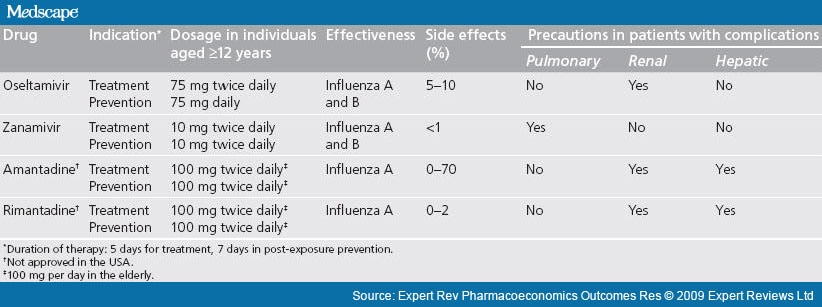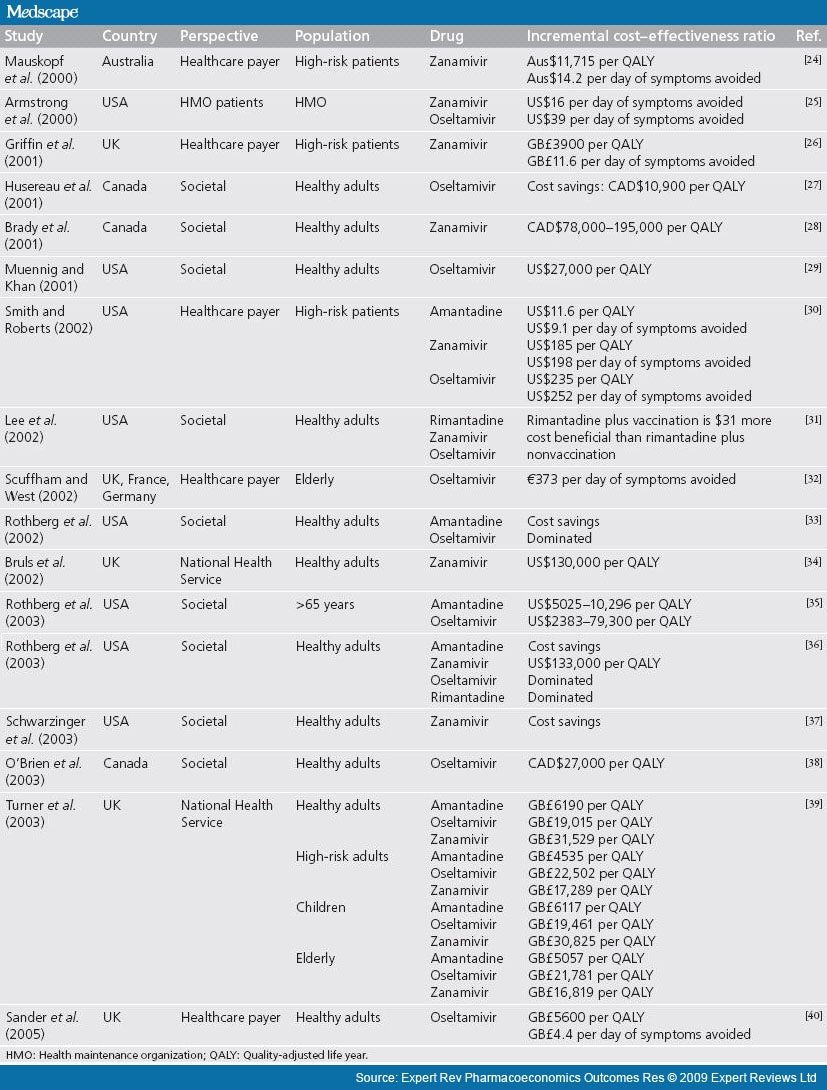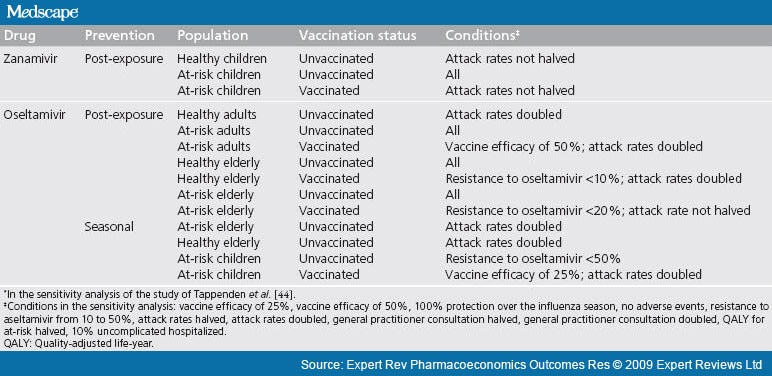Abstract and Introduction
AbstractInfluenza is an acute respiratory disease that causes epidemics and pandemics in the human population of temperate regions. Influenza epidemics occur every year during the winter months, affecting approximately 10% of the population. The primary strategy for reducing the effect of influenza in the community is to vaccinate persons who are at risk or caring for high-risk individuals each year before seasonal increases in influenza virus circulation occur. Antiviral drugs can be used for the treatment of influenza and the prevention of seasonal and post-exposure influenza. Four antiviral drugs are available for the prevention and treatment of influenza infections: oseltamivir, zanamivir, rimantadine and amantadine. Antiviral drugs can be used for the treatment of influenza and for post-exposure and seasonal influenza prevention. The cost–effectiveness of antiviral therapies ranged from cost savings to more than US$130,000 per quality-adjusted life-year (QALY) for influenza treatment, from GB£9000 to more than £1 million per QALY for seasonal prevention and from cost savings to £100,000 per QALY for post-exposure prevention. Based on the cost–effectiveness threshold of £30,000 or $40,000 per QALY, antiviral therapies can be recommended for influenza treatment and post-exposure prevention in healthy and high-risk individuals and for seasonal prevention in high-risk individuals. Zanamivir, oseltamivir and amantadine have favorable cost–effectiveness ratios for these interventions, but amantadine should only be used in countries with a low prevalence of resistant virus. The stockpile of antiviral drugs should be maintained in developed countries because they are cost effective for the prevention and treatment of a possible influenza pandemic.
IntroductionInfluenza is an acute respiratory disease that causes epidemics and pandemics in the human populations of temperate regions. Influenza epidemics occur every year during the winter months, affecting approximately 10% of the population.[1] Influenza viruses can also cause pandemics, during which the rates of illness and death from influenza-related complications increase worldwide. Incidence rates of influenza infection vary with the nature of the virus strains and the population affected. Rates of serious illness are highest among people aged 65 years or older, children aged less than 2 years and people with high-risk conditions for influenza-related complications, such as chronic obstructive pulmonary disease.[2,3]
Although influenza vaccination is the primary method for disease prevention, anti-influenza drugs can be used as an adjunct to vaccination as they can reduce the duration and potential complications of influenza.[4] Anti-influenza drugs can be used to treat influenza cases and to prevent seasonal and post-exposure influenza. Nevertheless, it is not clear when antiviral drugs can be recommended from a cost–effectiveness point of view and which of the available drugs should be used in each situation. The objective of this article is to review the efficacy and cost–effectiveness of available antiviral drugs for the prevention and treatment of influenza, presenting and analyzing the results obtained in the evaluative studies published between 2000 and 2008.
Expert Rev Pharmacoeconomics Outcomes Res. 2008;8(6):563-573. © 2008 Expert Reviews Ltd.
Cite this: Recommendations for the Prevention and Treatment of Influenza Using Antiviral Drugs Based on Cost–Effectiveness - Medscape - Dec 01, 2008.














